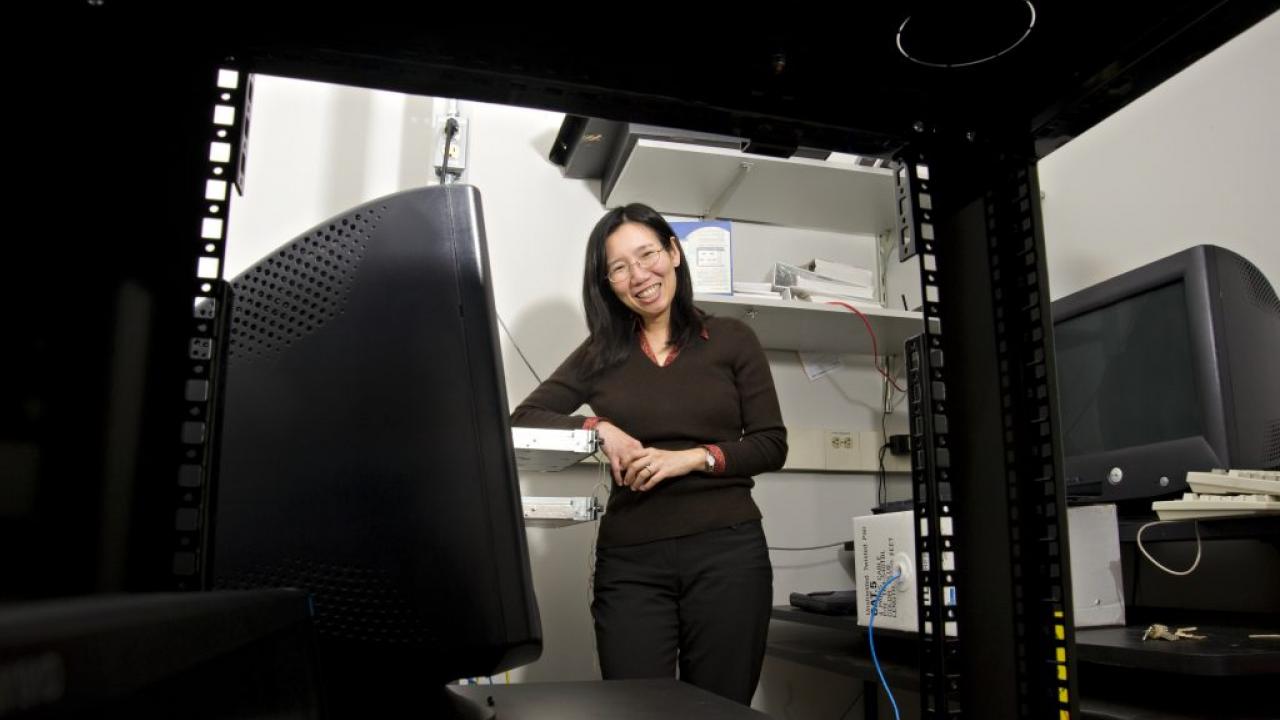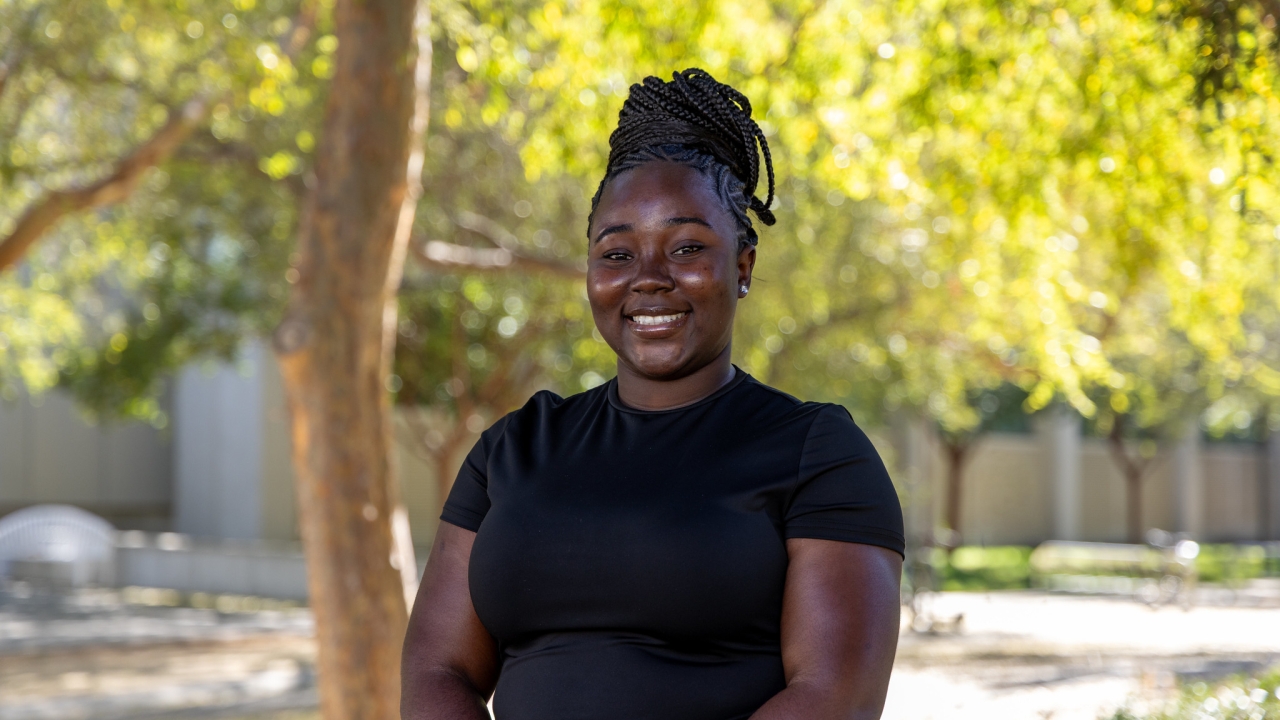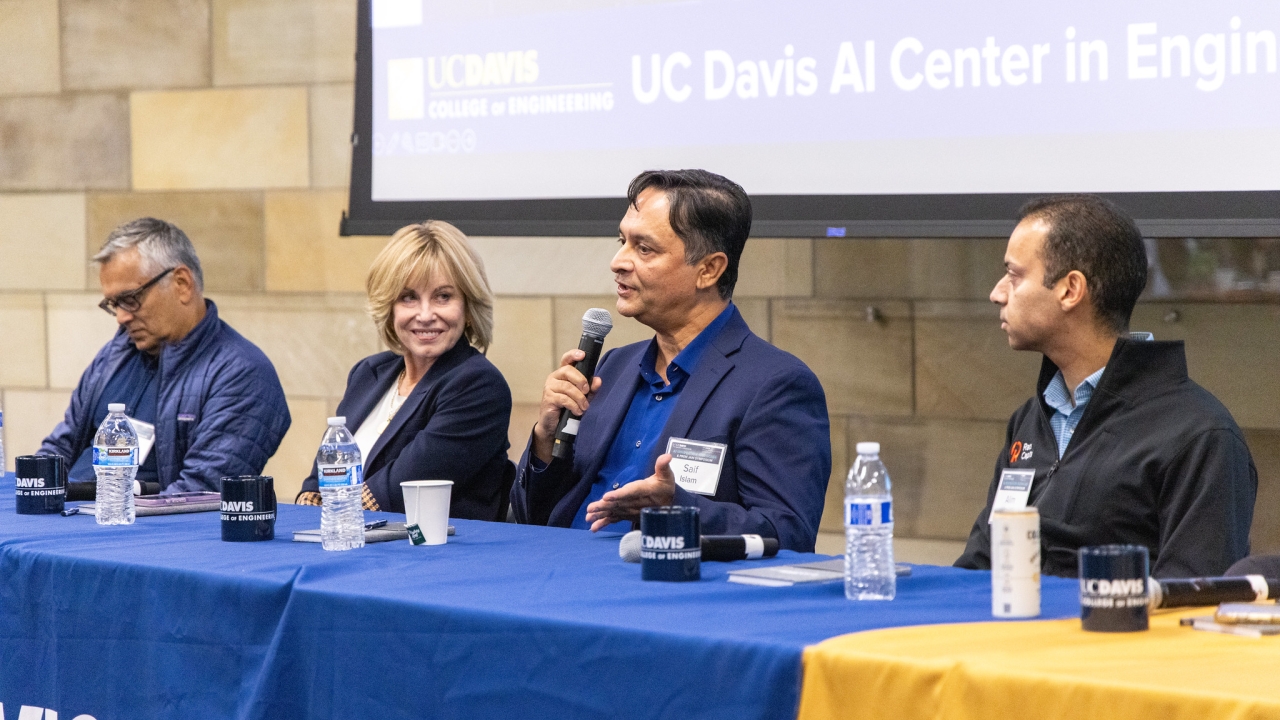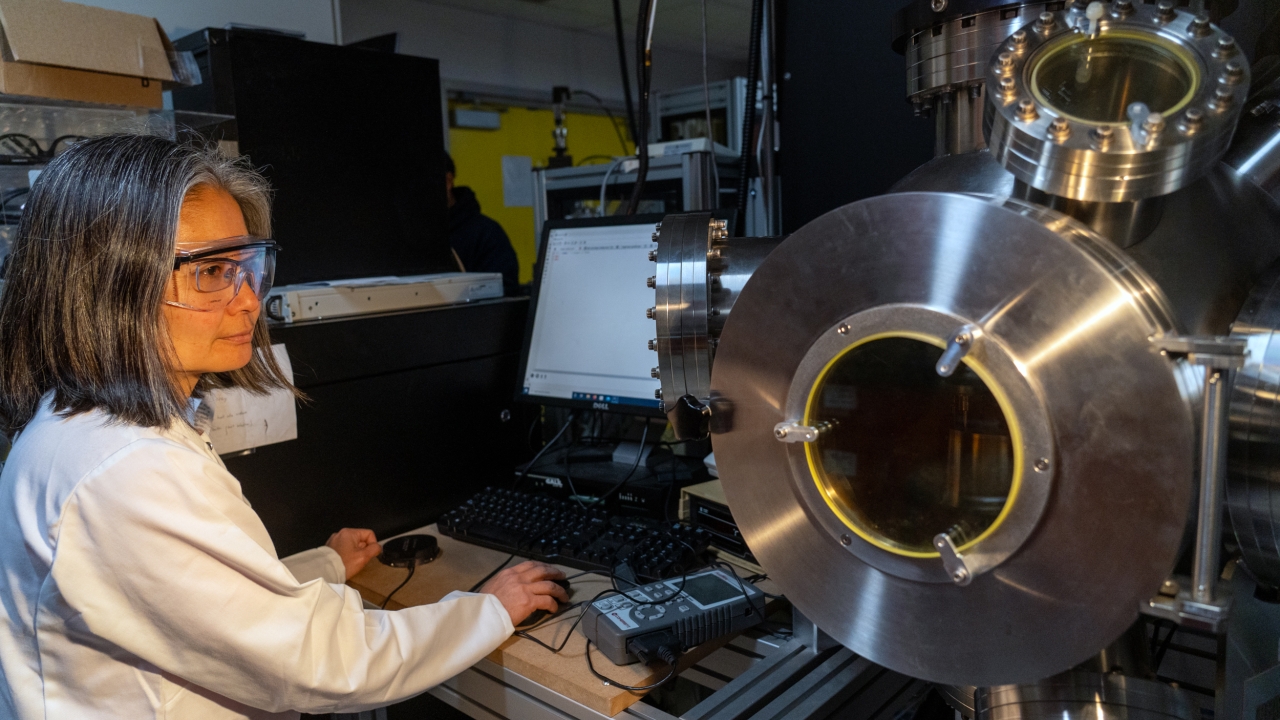
Chen-Nee Chuah: Improving Healthcare With ‘Smart’ Tech
By Brady Oppenheim
When you’re lying alone in a hospital room, or waiting in a doctor’s office, you’re not thinking about technology: You’re thinking about your health, your feelings and even your future.
But technology under development by UC Davis electrical and computer engineering Professor Chen-Nee Chuah potentially can make a direct impact on patients by providing earlier detections, streamlined interventions and better prognoses for patients.
Smart Hospitals, Smarter Healthcare
Chuah specializes in communications networks and distributed systems, which may not necessarily be the first things you think of when you think about healthcare. But she uses these high-tech systems to improve medical services and decision supports as well as to provide better information-discovery tools to healthcare providers, all while upholding strict patient privacy and data security.
A large part of Chuah’s current research embraces the concept of “smart hospitals:” a data-driven, real-time, wraparound approach to healthcare facilities and services. She envisions a “smart hospital” as a learning clinical environment that forges innovative collaboration between healthcare professionals, data scientists, health informatics and information-technology professionals to improve health diagnosis, prognosis and treatment for acute and chronic diseases.
To make “smart hospitals” happen, she’s harnessing smartdevice technologies – such as non-invasive and wearable sensors, data science and machine learning methods – to enable real-time analytic platforms and AI-assisted clinicaldecision support systems across the spectrum of care delivery.
Technology Tools for Direct Patient Impact
Chuah’s current “smart hospital” projects seek to develop analytic pipelines and incorporate machine-learning models into clinical decision support systems. These smart systems swiftly gather and process a vast array of data including time-series physiological signals from wearable sensors or medical devices, laboratory information, medical images, video and numerous features from electronic health records to provide the most accurate all-around picture of each patient’s unique needs.
Her Multi-Pronged Research Efforts Include:
- A machine learning clinical decision support system that analyzes waveform data from multiple physiologic sensors to detect life-threatening clinical events such as tension pneumothorax – trapped air in lungs’ pleural cavities that harms heart activity – plus automated diagnosis and prognosis of acute conditions like acute respiratory distress syndrome – fluid in lungs’ air sacs. This project will be funded by the U.S. Department of Defense.
- Personalized and adaptive therapy for trauma patients, namely a novel resuscitation platform harnessing the power of endovascular devices like catheters with AI-assisted fluid and medication delivery. This research also is funded by the U.S. Department of Defense and is being performed in collaboration with Wake Forest School of Medicine, the U.S. Air Force and the Naval Medical Research Center.
- Leveraging the “internet of things” – the connection of devices to the internet – to collect real-time sensor data and develop machine-learning-based algorithms to detect critical congenital heart defects. This research is supported by the National Institutes of Health.
- Extracting information from electronic health records and training a machine-learning classifier to predict the risk of venous thromboembolism episodes – blood clots – in cancer patients. This project is supported by CITRIS seed funding.
- In collaboration with the UC Davis MIND Institute, applying computer vision and machine-learning techniques to a learning model for autism spectrum disorder recognition. This project also is supported by the National Institutes of Health.
These high-tech research resources don’t eliminate the need for human healthcare professionals; rather, they assist providers to help the patients in their care.
“The goal is to leverage data-science techniques to quickly and intelligently digest huge amounts of multi-modality data and signals in the hospital or intensive-care units, transforming them into information such as risk prediction that can aid providers in patient diagnosis and treatment,” she said.
High-Tech with a Human Touch
Chuah’s “smart” research could mean major impacts on everyone involved in the healthcare field: for hospital patients, for people needing critical care in medically underserved areas such as military field hospitals and rural communities, and for medical professionals and administrators.
And, while Chuah enjoys her high-tech research as well as working with interdisciplinary teams including UC Davis Schools of Medicine and Public Health, for this renowned technology expert, it’s all about the human side of things. “The potential to make a difference in a patient’s life, in terms of outcome or quality of care, is very rewarding to me,” she said.




